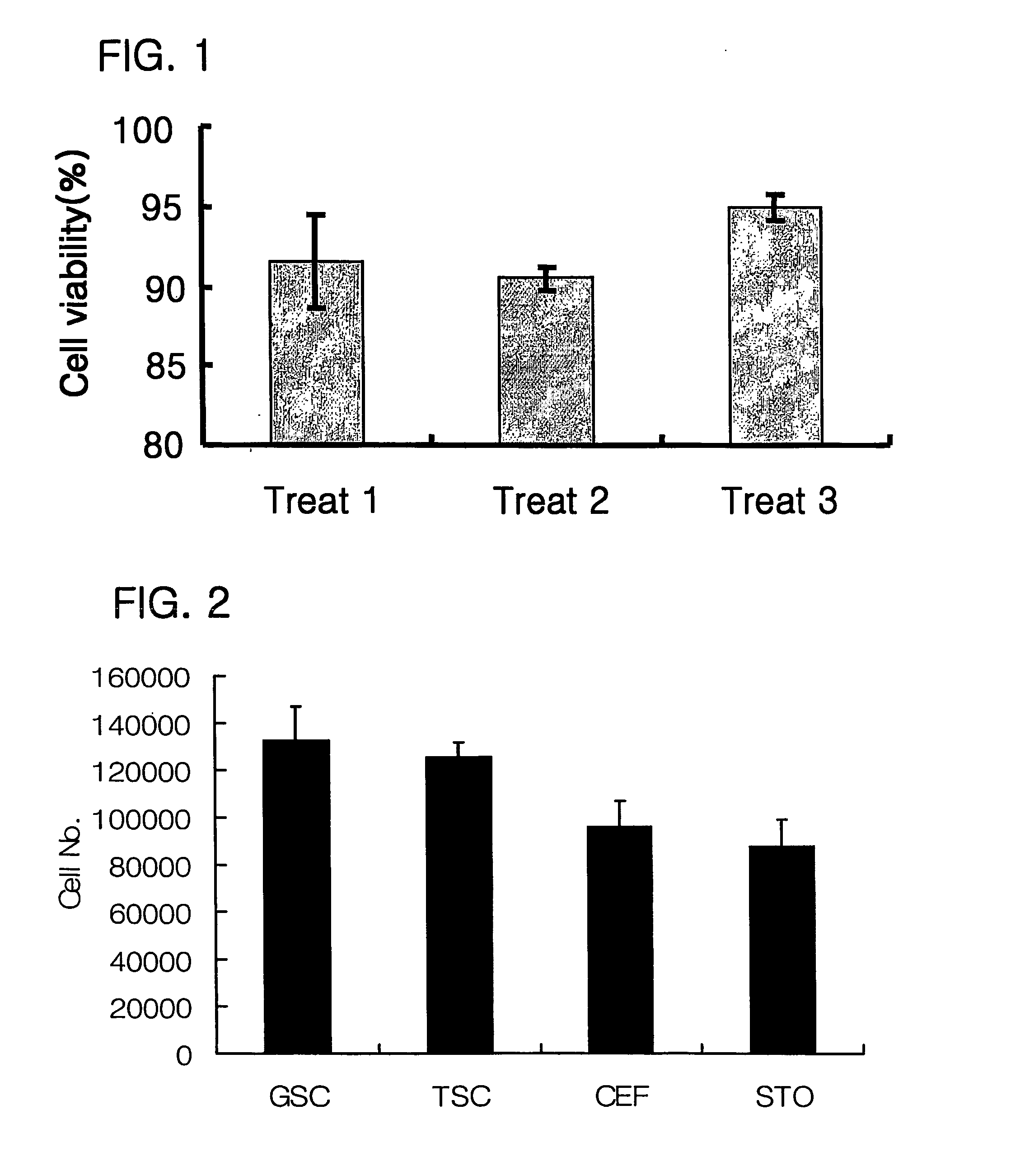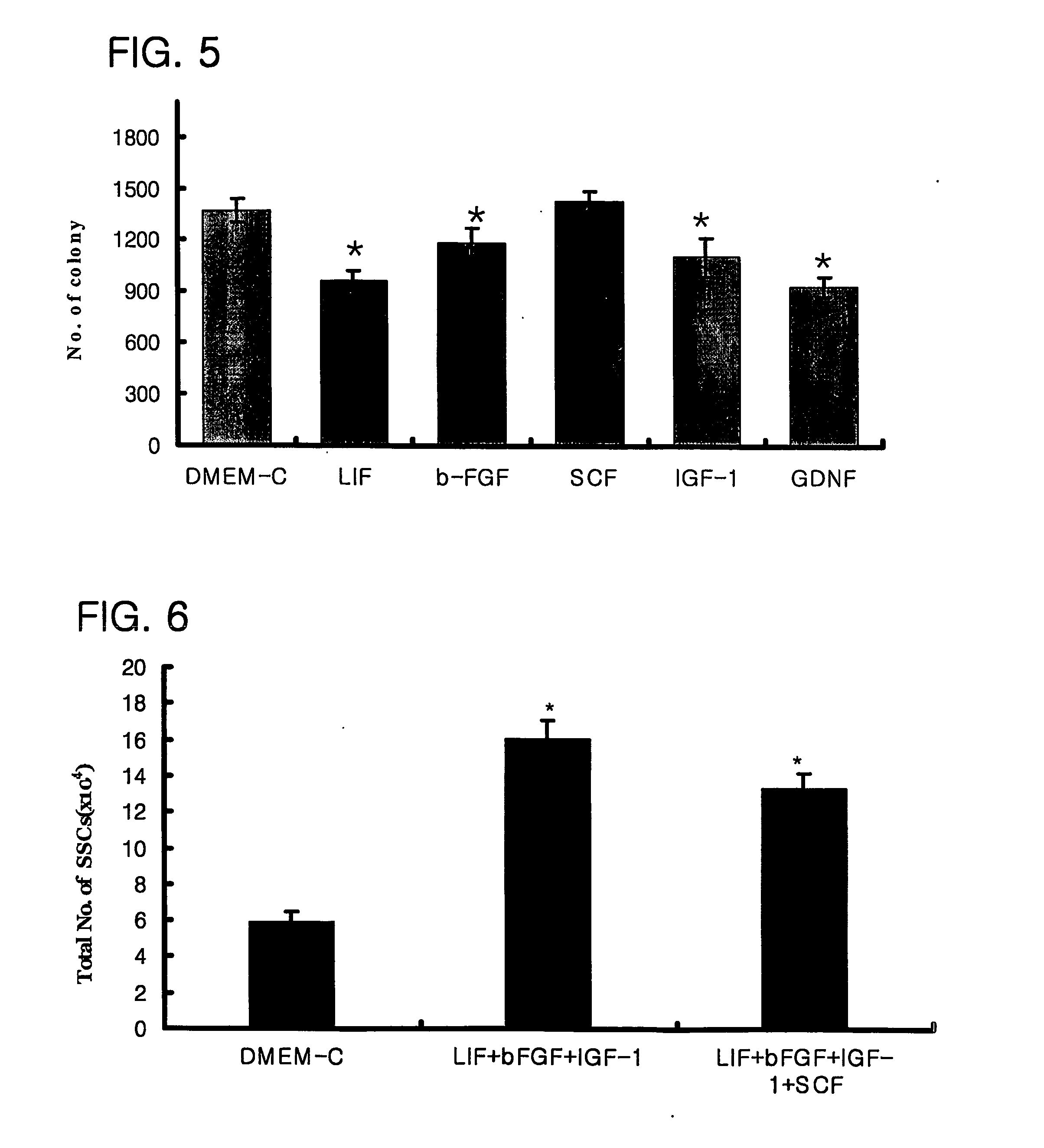Method for culturing avian spermatogonial stem cells and avian spermatogonial stem cells prepared thereby
a technology of spermatogonial stem cells and culturing methods, which is applied in the field of culturing avian spermatogonial stem cells prepared thereby, can solve the problems of spermatogenesis that is not easy to achieve, systemic and effective process, and complex spermatogenesis
- Summary
- Abstract
- Description
- Claims
- Application Information
AI Technical Summary
Problems solved by technology
Method used
Image
Examples
examples
[0082] The following specific examples are intended to be illustrative of the invention and should not be construed as limiting the scope of the invention as defined by appended claims.
Materials and Methods
1) Donor Chicken and Isolation of Testis
[0083] Chickens for culturing spermatogonial stem cells were White Leghorn males maintained at Avicore Biotechnology Institute Inc. The testes of chickens were obtained by dissecting vertebrae cervicales of donor chicken. The weights of body and testis depending on age were measured.
2) Comparison of Disaggregation Method of Testis Tissue
[0084] The connective tissue and membrane around the testis isolated were removed and tunica albuginea was then removed using microforceps. The testis was cut into pieces using anatomic knife under a stereomicroscope and disaggregated according to various protocols.
① Disaggregation by Two-Step Enzymatic Digestion
[0085] This protocol was carried out with a little modification of the Ogawa et al. met...
PUM
| Property | Measurement | Unit |
|---|---|---|
| pore size | aaaaa | aaaaa |
| body temperature | aaaaa | aaaaa |
| body temperature | aaaaa | aaaaa |
Abstract
Description
Claims
Application Information
 Login to View More
Login to View More - R&D
- Intellectual Property
- Life Sciences
- Materials
- Tech Scout
- Unparalleled Data Quality
- Higher Quality Content
- 60% Fewer Hallucinations
Browse by: Latest US Patents, China's latest patents, Technical Efficacy Thesaurus, Application Domain, Technology Topic, Popular Technical Reports.
© 2025 PatSnap. All rights reserved.Legal|Privacy policy|Modern Slavery Act Transparency Statement|Sitemap|About US| Contact US: help@patsnap.com



